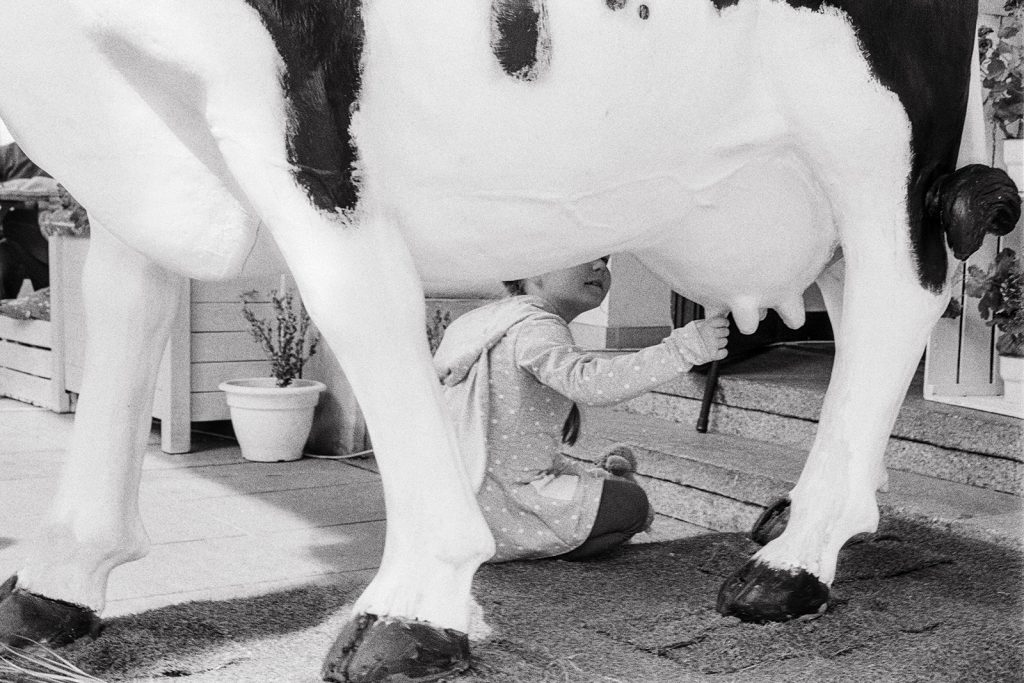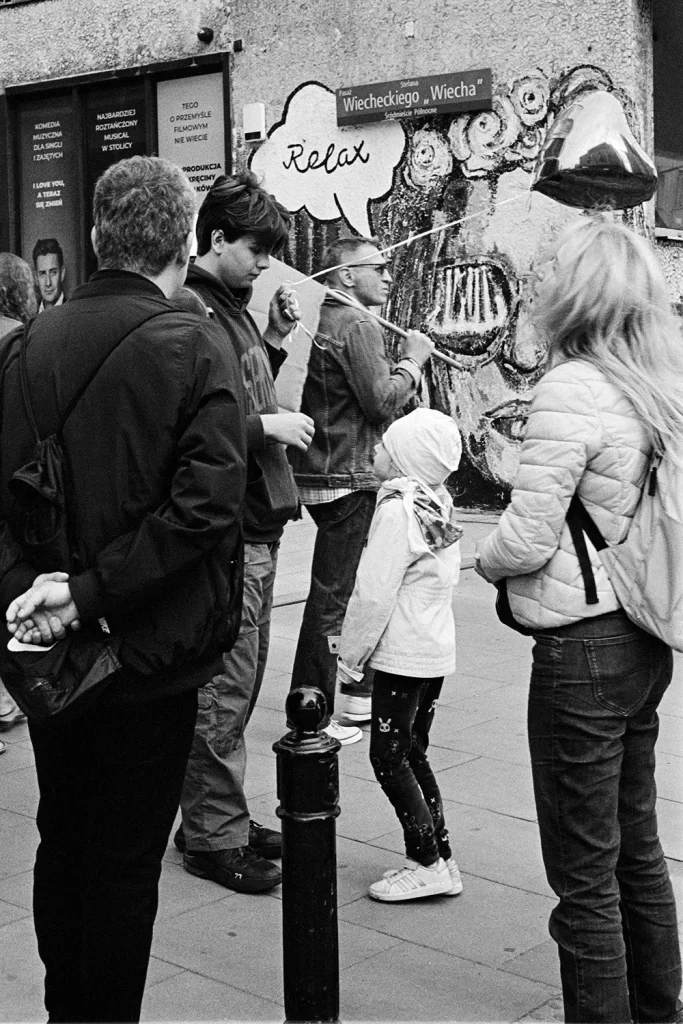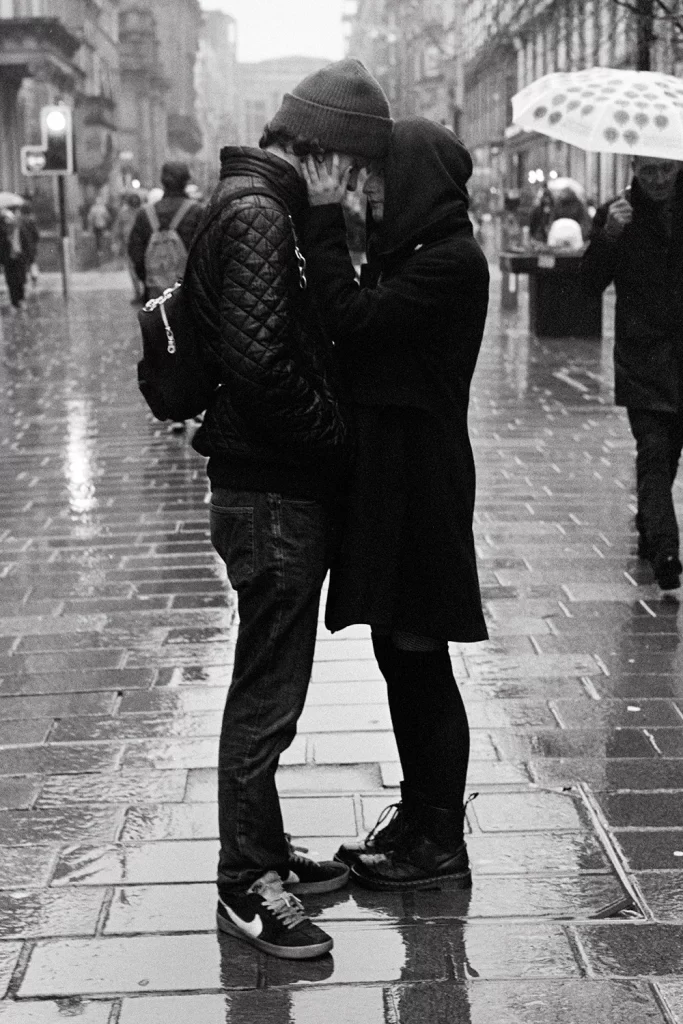My fascination with the exceptional work of the masters of street photography tends to come not from the photographer’s technical prowess, compositional expertise, or excellence of the prints, but from their preternatural ability to find themselves in the right place, at the right time, to catch the right moment in the right way. It is this, then, that I strive for. How is it possible? The 1st criterion, of course, is to be there, camera in hand. The other? To be aware, attentive, and to anticipate.
Cartier-Bresson, Meyerowitz, Webb, Winogrand: as exceptional as they are, they are unable to see the future, but they did learn to predict it. This talent for anticipation may be innate, an instinctive sense honed through childhood, but it can be learned. One only needs to study the patterns and rhythms of the street to develop an awareness that feeds an intuition that supports anticipation.
The Psychology of Anticipation

In the sense of street photography, to anticipate is to recognise a future moment to allow time to be in the right place at the right time to make the photograph. To do so means recognizing patterns and predicting movement. Unique occurrences that unfold in the street are rare, so the photographer begins to unconsciously recognise cause and effect. Whether comedy or tragedy, an aggressive collision between 2 people will give rise to some drama. A missed bus sparks a commuter’s gesture of frustration. A child playing with a ball in a busy street? That ball is going to find its way under someone’s feet. The potential is endless, it only takes some experience to develop intuition and a gut instinct that something may transpire.
In a past issue of the Photos, mostly newsletter, I wrote about the French concept of disponible, of being open and receptive to what might occur. Anticipation is an important part of this, letting one’s eye be open to all possibilities, waiting for something to happen and trying not to dismiss or second guess a situation. To notice and wait for development, attention to detail is key.
Honing Anticipation

Anticipation doesn’t come easy though it can be learned and developed. As I have noted, a vital aspect is to become familiar with the patterns and repetition of the street. This is, to some degree, synonymous with understanding human nature and the behaviour, both rational and irrational, that we exhibit in public. Beyond that, though, it is helpful to learn to see beyond the obvious. A situation may seem run-of-the-mill, completely without interest, but then some small detail or action turns the scene on its head. So often something may catch the eye and the scene will not develop as one may hope. So what? What is lost? The photographer was attentive to the possibility that something may unfold, and in those situations when it does? Perfect!
It is crucial to pay attention. Elsewhere I’ve written about staying alert when photographing in the street. Avoid podcasts, music, or anything else that may divert attention away from the street. Look for stories that may occur. See something and imagine what might transpire. In this way, one can be quick to make a decision and step into the space to make the photograph. While it may seem unlikely, a comparison can be made of Garry Winogrand’s photography with the paintings of his contemporary, Jackson Pollock. Both artists are at the centre of their art. Pollock, literally standing on his canvas and dripping the paint. To view Winogrand’s photographs is to feel like you are in the midst of the frame. He was a master of anticipation.
Timing is Everything

Often street photographers will talk about the importance of timing. Richard Kalvar often analyses a frame by imagining what it may have been a second before or a second after. Criticism of much of the mediocre street photography out there tends to rest on a frame made a fraction too early or a fraction too late. Considering a photograph made at 1/1000s, Joel Meyerowitz notes that in 1s, 1000 photographs could have been made. Was the one captured the right one? In the documentary, The Impassioned Eye, Henri Cartier-Bresson illustrates that oft-misunderstood decisive moment, oui, non, oui, non, OUI! Everything falls together in that fraction of a second then is gone.
To predict and then catch that fraction of a second, then, is what anticipation in street photography is all about. Foreseeing and then positioning oneself for that optimal moment to trip the shutter, that moment of heightened emotion, action, drama, comedy, or irony. To spot things as they begin, then predict how they may transpire, how movement, action, gesture, and emotion will affect the scene, that is anticipation.